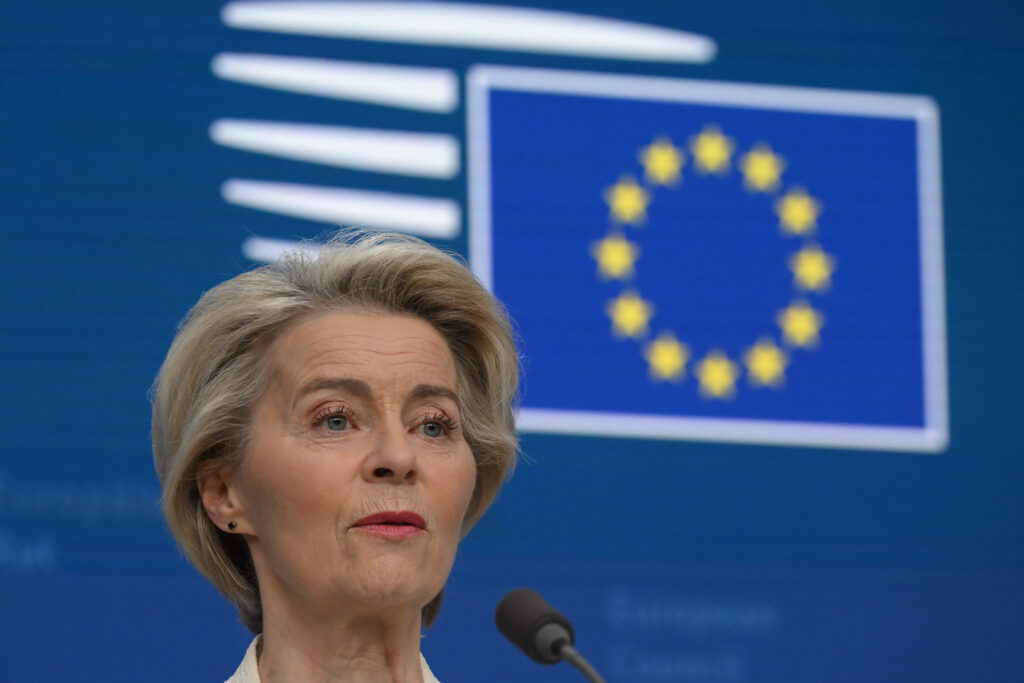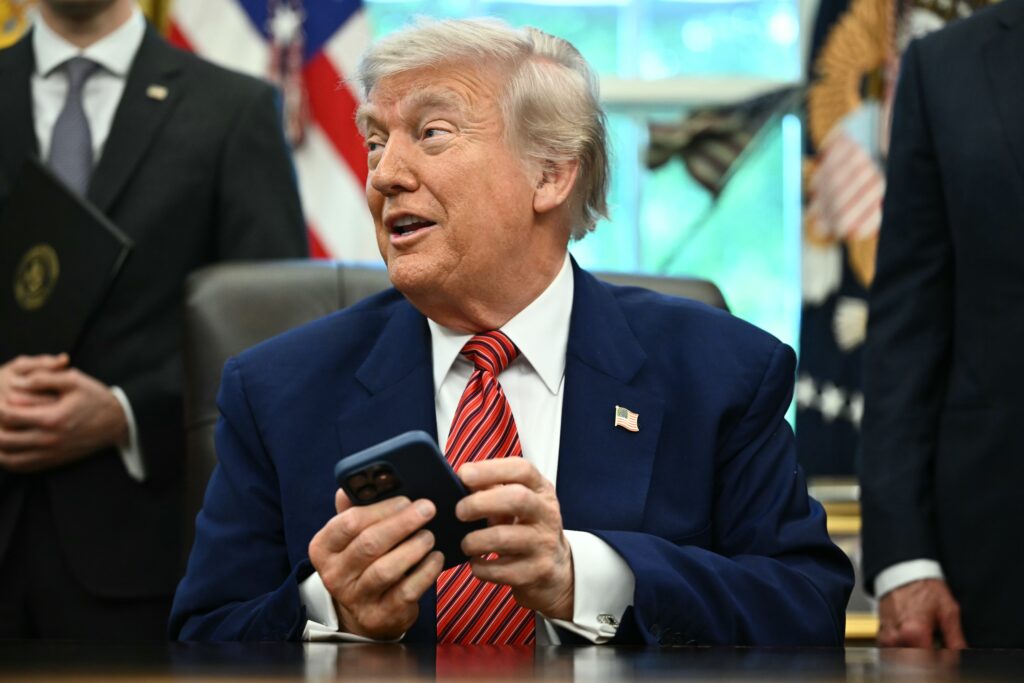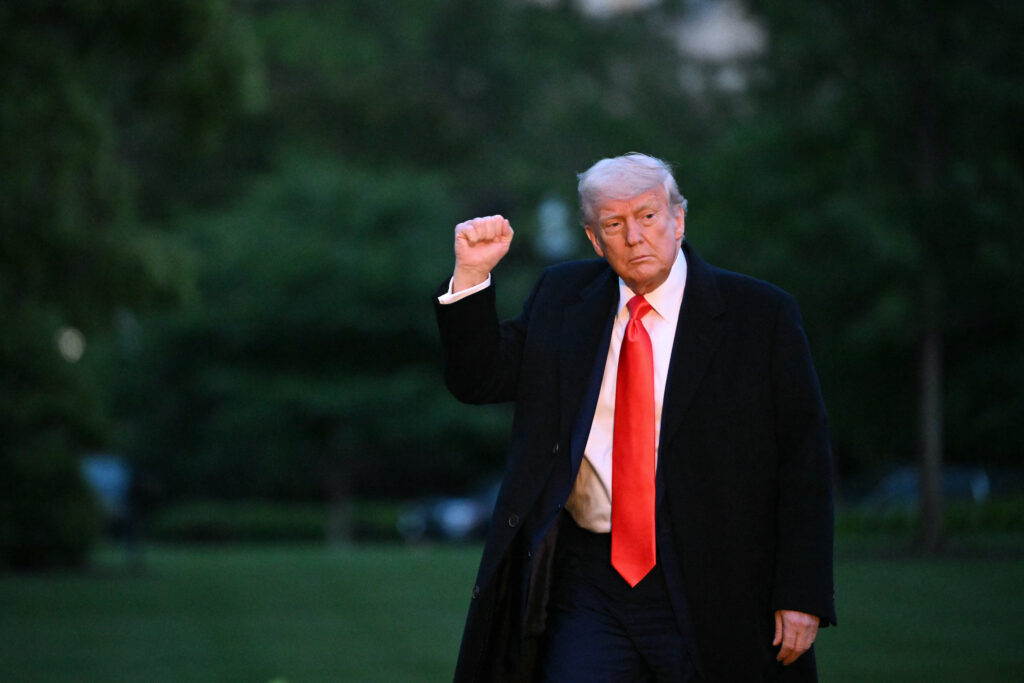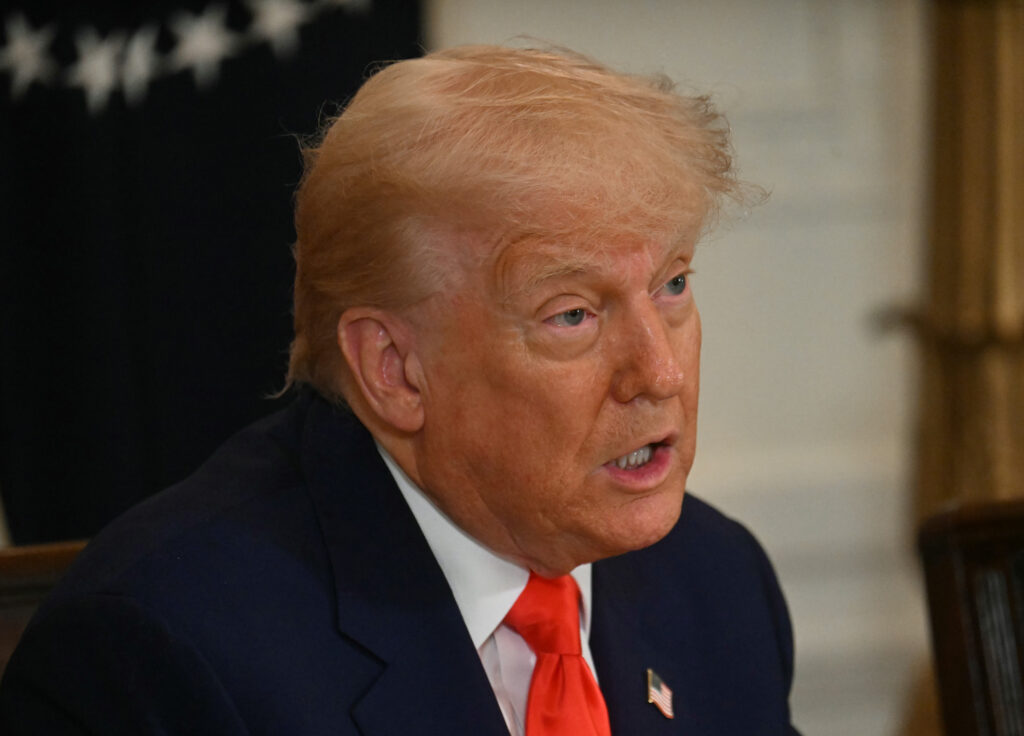Asian markets mixed as Trump dials down after EU tariff threat
Asian stocks were mixed Monday after Donald Trump thrust his trade war back into the spotlight by threatening the European Union with huge tariffs before extending a deadline for their implementation.Just as markets were showing signs of settling following their bond-fuelled selloff last week, the US president hurled his latest grenade across the pond by levelling 50 levies at the bloc from June 1, saying talks were “going nowhere”.He also said he would hit smartphone makers with 25 percent tolls if they did not make their handsets in the United States.Wall Street’s three main indexes and most European markets dumped into the red Friday.However, Asia got a reprieve after Trump said Sunday that he would delay the EU tariffs until July 9 following a “very nice call” with its boss Ursula von der Leyen, adding that officials will “rapidly get together and see if we can work something out”.Tokyo, Shanghai and Seoul rose, but Hong Kong, Sydney, Singapore, Wellington, Taipei, Manila and Jakarta fell.The dollar remained under pressure after dropping Friday.Analysts said the latest unexpected salvos from the White House highlighted the uncertain path investors are having to walk owing to the president’s volatile policy pivots.They have also warned that his bill to extend tax cuts and slash spending could balloon the national deficit by trillions of dollars, putting upward pressure on Treasury yields and sparking warnings about the world’s biggest economy.”The consensus view was always that the 50 percent tariffs wouldn’t hold for long anyhow and would have most likely been reduced towards 20 percent shortly after 1 June,” said Christ Weston at Pepperstone.”But this action (Sunday) simply highlights that while tariffs will be helpful in keeping the US deficit in check, they are also a primary negotiation tool, where the initial gambit has been swiftly reduced.”- Fed minutes -Ray Attrill at National Australia Bank added: “In what is an otherwise quiet week on the scheduled global data and events calendar… trade discussion look set to dominate the market landscape this week.”Investors are also looking ahead to the release of minutes from the Federal Reserve’s policy meeting this month, hoping for an idea about decision-makers’ views on the economy in light of the tariff war.That is followed by its preferred measure of inflation — US personal consumption expenditures — which will be unveiled Friday.The bank showed a shift in tone in its post-meeting statement “with uncertainty about the economic outlook increasing further, stating that the risks of higher unemployment and inflation have both risen”, said Michael Hewson, of MCH Market Insights.”This is a problem for the Fed’s dual mandate given that these two items could move in the same direction when any policy response may well hinder one over the other.”He added: “The biggest concern is likely to be the sharp drop in US consumer confidence levels in the last few months, however… this could quickly reverse if the US government begins to realise that its tendency to pick fights at every turn is doing more harm than good domestically.”In company news, shares in Seoul-listed Samsung rose more than one percent despite Trump’s threat of tariffs on smartphone makers.And in Tokyo, Nippon Steel rallied as much as 7.4 percent after Trump threw his support behind a new “partnership” between the Japanese firm and US Steel.His remarks Friday were the latest in a long saga surrounding Nippon Steel’s $14.9-billion takeover of US Steel first announced in late 2023.He said US Steel’s headquarters would remain in Pittsburgh and that the partnership would create at least 70,000 jobs and add $14 billion to the US economy.However, neither the White House nor the two companies have published details of the new arrangement and many questions remain.US Steel soared 21 percent in New York on Friday.- Key figures at around 0300 GMT -Tokyo – Nikkei 225: UP 0.5 percent at 37,329.22 (break)Hong Kong – Hang Seng Index: DOWN 0.7 percent at 23,447.04Shanghai – Composite: UP 0.1 percent at 3,352.76Euro/dollar: UP at $1.1395 from $1.1369 on FridayPound/dollar: UP at $1.3564 from $1.3535Dollar/yen: DOWN at 142.55 yen from 142.57 yenEuro/pound: UP at 84.00 pence from 83.96 penceWest Texas Intermediate: UP 0.2 percent at $61.66 per barrelBrent North Sea Crude: UP 0.2 percent at $64.91 per barrelNew York – Dow: DOWN 0.6 percent at 41,603.07 (close)London – FTSE 100: DOWN 0.2 percent at 8,717.97 (close)






